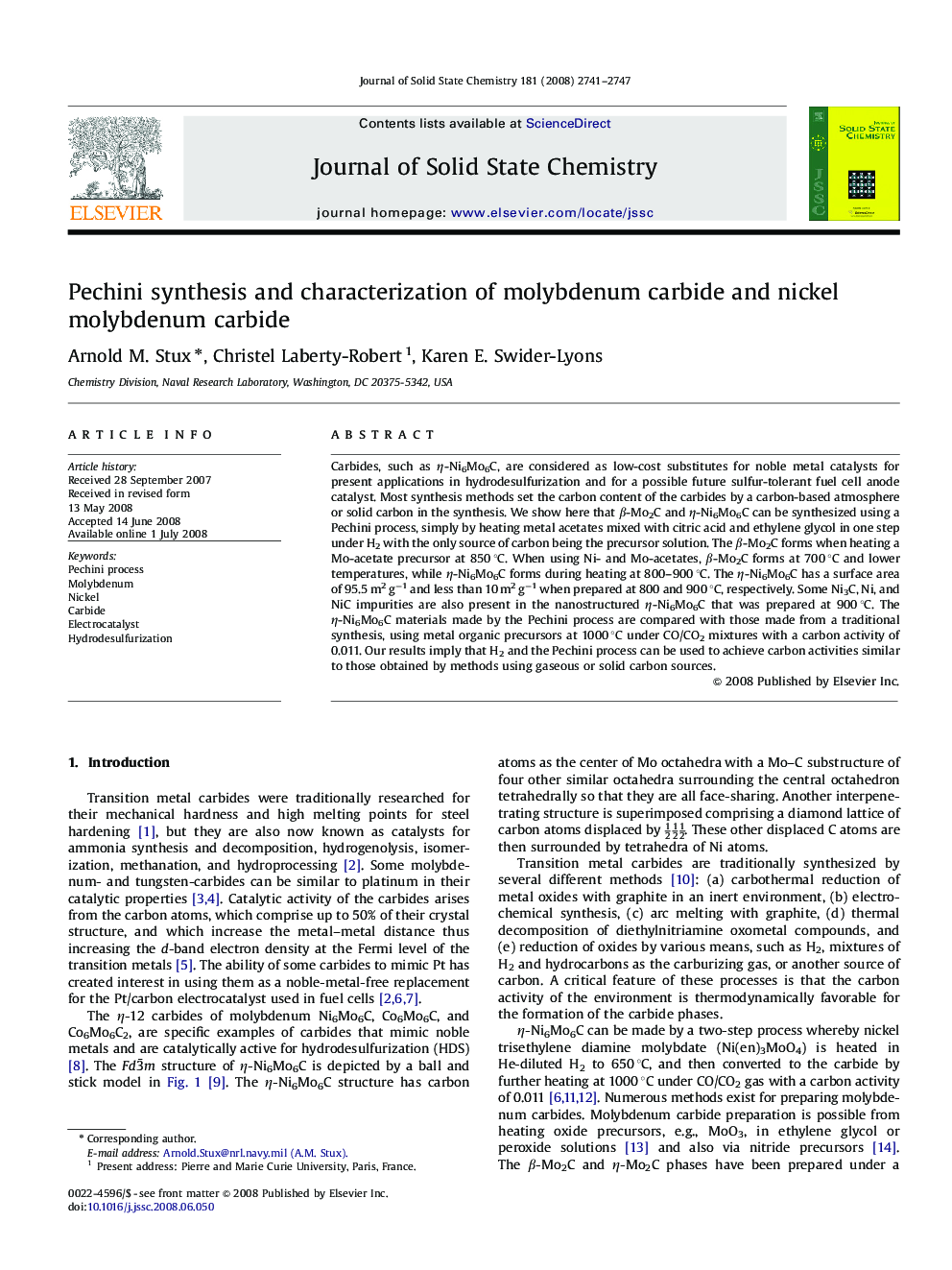| Article ID | Journal | Published Year | Pages | File Type |
|---|---|---|---|---|
| 1332027 | Journal of Solid State Chemistry | 2008 | 7 Pages |
Carbides, such as η-Ni6Mo6C, are considered as low-cost substitutes for noble metal catalysts for present applications in hydrodesulfurization and for a possible future sulfur-tolerant fuel cell anode catalyst. Most synthesis methods set the carbon content of the carbides by a carbon-based atmosphere or solid carbon in the synthesis. We show here that β-Mo2C and η-Ni6Mo6C can be synthesized using a Pechini process, simply by heating metal acetates mixed with citric acid and ethylene glycol in one step under H2 with the only source of carbon being the precursor solution. The β-Mo2C forms when heating a Mo-acetate precursor at 850 °C. When using Ni- and Mo-acetates, β-Mo2C forms at 700 °C and lower temperatures, while η-Ni6Mo6C forms during heating at 800–900 °C. The η-Ni6Mo6C has a surface area of 95.5 m2 g−1 and less than 10 m2 g−1 when prepared at 800 and 900 °C, respectively. Some Ni3C, Ni, and NiC impurities are also present in the nanostructured η-Ni6Mo6C that was prepared at 900 °C. The η-Ni6Mo6C materials made by the Pechini process are compared with those made from a traditional synthesis, using metal organic precursors at 1000 °C under CO/CO2 mixtures with a carbon activity of 0.011. Our results imply that H2 and the Pechini process can be used to achieve carbon activities similar to those obtained by methods using gaseous or solid carbon sources.
Graphical abstractBall and stick representation of the η-Ni6Mo6C crystal structure.Figure optionsDownload full-size imageDownload as PowerPoint slide
